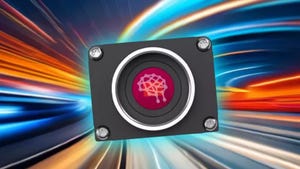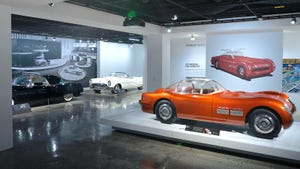August 23, 2010
When Devon Worksdecided to create a new timepiece, the company knew that mere attention todetail would not be enough to make it different. They had to think entirely outof the box and go beyond the idea of what a watch is supposed to look like. Withthis no-holds-barred approach, Devon Works decided to do something bold,something exciting, and something that would stand out and be noticed.
"The idea (of moving beyond the standard watch design) hasbeen around for a while, and this was the perfect time to finalize the work andput it on the market," says Jason Wilbur, director of design at Devon Works,and the lead on the Devon watch project. "We produced the 3D CAD drawings, butthat wasn't enough to give us the true sense of the impact that the real watchwould have."
Designinspiration for this luxury watch came from industrial conveyor belts and motorcycles.Called the Tread 1, the original design for the watch was completed using SolidWorks3D CAD software. The virtual drawings were a great starting place, but didn'thave the impact that a prototype would offer. "We needed to have a real watchon our wrists because, without it, we knew it would be difficult to get the newconcept across," Wilbur says.
Materials Decisions Critical to New Watch Design_D Click here for a photo slideshow |
As the lead on the project, Wilbur was intimately involvedin the design of the watch, which features an interwoven time belt systemrather than a digital readout or circular analog dial. "We went outside theboundaries of what a watch is supposed to look like," he says. The series ofbelts indicates hours and minutes in exacting motion, while the belt indicatorfor seconds runs continuously. In the final, real, version, accuracy is assuredusing a proprietary optical recognition system that monitors each beltposition. For the real watch, the belt assemblies would be mounted on a centralchassis that allow for perfect clearance of the moving parts, as well as to createthe illusion that the parts are floating within the case.
Onestriking aspect of the Devon watch does is its five-piece case design made fromhigh-grade stainless steel.
"Theaesthetics of the timepiece were designed around a combination of technologies,which meant that we needed to use multiple technologies for the prototype aswell," Wilbur said. A total of five prototypes were built to assessdesign ergonomics and to help as a sales tool to get retailers interested inthe final product.
"This project wouldn't even have gone over without using aprototype. You just can't explain what this watch looks like. It's so far outof the normal idea of what a watch is," he says. "But, when you pull up yoursleeve and they see the full power of the timepiece, selling it becomessecondary."
Prototype Creation
Devon Works contracted with Solid Concepts Inc., based inValencia, CA, to produce all five of the watches.
To create the watch, Solid Concepts not only had to usemultiple types of machinery and materials, they also provided post componentfinish work including polishing, microfinishing, laser cutting, screen printingand anodizing.
To manufacture the prototypes, the outer case, watchbandlinks, band clasp, tuning knob, and back plate were all CNC machined fromaluminum. Of course, the smaller the parts that have to be fabricated, the moreimportant finished part tolerance becomes. The watch not only had to be madeout of the right materials, all the pieces had to fit together perfectly. Aftermachining, Solid Concepts polished anodized each of the components. The Devonlogo was laser cut from 0.020-inch aluminum, brushed, and silkscreened. Each ofthe four belts (one belt for hours, two belts for minutes and one for seconds)was silkscreened with the number graphics on black vinyl, then hand trimmed tosize. The belts were stretched into place and wrapped around the internalcomponents where they were bonded into place.
All the other internal components were made using thecompany's PolyJet rapid prototyping process, then finished and painted to givethem a metal-like appearance. Each piece was located and bonded into placeaccording to the CAD data received from Devon Works. The watchband itself wasmade using PolyJet master models and then QuantumCast with shore 90A urethanerubber. The watch crystals were CNC machined clear acrylic, and hand polishedto optical clarity. Internal and external screws were purchased from aspecialty vendor.
The final watch looks exactly the same as the prototype. Theonly difference is that the components move as they were designed to do. Thebelts are driven by compact microstepper motors, one for each of the fourbelts. A lubricant-free pulley system moves freely via the integration ofjeweled bearings. A temperature-compensated crystal provides data to theonboard microprocessor that drives the motors, all powered by a lithium polymerrechargeable cell. On the final watch, the window into the mechanical movementsis a crystal produced from scratch-resistant and anti-reflective polycarbonatewith bullet-proof durability.
"It takes a trained eye to tell the difference between thefinal manufactured timepiece and the prototypes we had built," Wilbur says.
You May Also Like




